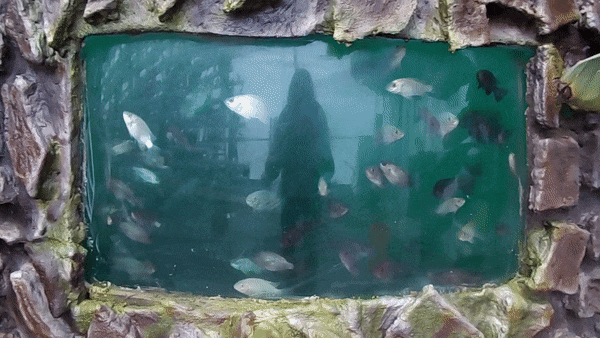
Aquaponics
Where Fish meet plants and live harmoniously
The Solution within Aquaponics:


The phenomenon of combining farming of edible plants and edible aquatic organisms is not a new idea. It is rumored to have started in 1000 AD when the Aztecs started to grow some of their crops on rafts on fish lakes. Then the Chinese combined rice paddies and fish farming. The contemporary concept of Aquaponics is about the same, but with more variety and complexity.
Aquaponics is a hydroponic growing method in that it requires no soil. In both methods, the plants’ roots are constantly bathed in highly oxygenated, nutrient-rich water, and both see growth rates far above those found in soil-grown plants.
Aquaponics is an improvement over hydroponics for the following reasons: 1. Expensive, non-renewable chemical nutrients are replaced by less expensive fish feed. Hydroponic nutrient solutions are expensive and are gradually becoming more expensive as some ingredients are becoming over-mined and increasingly difficult to acquire. A gallon of hydroponic nutrient solution costs $30–60, and a few tomato plants will easily go through that during their productive lifetime. Meanwhile, a 50-pound (23-kg) bag of tilapia feed costs about the same amount, and at a 1.3 feed conversion ratio will give you 38 pounds (17 kg) of mature tilapia and simultaneously support about eight tomato plants. 2. You never dump out your nutrient solution. Water in hydroponic systems needs to be discharged periodically, as the salts and chemicals build up to levels that become toxic to the plants. This is both inconvenient and problematic, as the disposal location of this wastewater needs to be carefully considered. In an aquaponic system, rather than having these problems with chemical imbalance, you achieve a natural nitrogen balance that is the hallmark of an established ecosystem. The water in your system is a critical component that you nurture as part of that balance. In aquaponics, you never replace your water; you only top it up as it evaporates and transpires (evaporates from the leaves of the plants).
A well-balanced aquaculture system must ensure that the waste from the fish is removed before it builds to toxic levels, or the fish will die. Hydroponics (predominantly used in the greenhouses of Canada) requires a constant replenishment and manual balancing of the chemical nutrients, or the plants die. By combining the two systems, aquaponics transfers much of the responsibility for reaching equilibrium between the filtration of the fish waste and the nutrient needs of the plants to Mother Nature.
Aquaponics is more productive. A university study by the Crop Diversification Centre in Alberta, Canada (Savidov, 2005), has shown that after six months, when the aquaponic biofilter is fully established, a grower will see faster and better growing results with aquaponics than with hydroponics.
Excerpts from the book Aquaponic Gardening: A Step-By-Step Guide to Raising Vegetables and Fish Together (Sylvia Bernstein) enables our exploration of the aquaculture opportunity.
Fish are vastly more efficient sources of protein than other forms of animal protein. Currently 37 percent of the world grain harvest is being used to produce animal protein. (Brown, 2003) Unfortunately most of that is going to feed the most inefficient source of animal protein: cattle. Look at the food conversion chart above and imagine what would happen if the 700 million tons of grain used annually for livestock feed were fed to fish and chicken, rather than pork and beef. Why is this so? In his 2009 book Just Food, James McWilliams explains it eloquently: “The ability to float effortlessly negates the need to undertake such energy-hogging endeavors as standing, walking and running. All these forms of mobility are internal energy sinks for terrestrial creatures, but not for fish. A fish is ecologically honed to translate the majority of its caloric intake into ample flesh that’s edible, usually tasty, rich in protein and flush with heart-healthy oil. This streamlined translation, if responsibly managed and harnessed by humans, has the potential to improve the environment while generating more protein with fewer resources.” (p. 155)




Aquaponic Facts:
Aquaponics is a closed-loop system, meaning there is no waste. Just like in nature, every input has an output and every output is an input.
More Yields with a balanced system and perfect light exposure. When you negate pests, bad weather and use automation intelligently, your yields will go sky high
Uses 75-90% less water than conventional agriculture. This is achieved through the no waste closed loop.
Aquaponics uses no harmful chemicals or pesticides. There is no cheating with this or the fish would die.
You can literally set aquaponics up anywhere. Parking lots and with the right structure rooftops!
Having more - smaller outfits servicing smaller communities fortifies food security and reduces food miles.
Fish are the best in the world at converting plant protein to animal protein. Aquaponics can produce 50,000 pounds of tilapia and 100,000 pounds of vegetables per year in a single acre of space.
